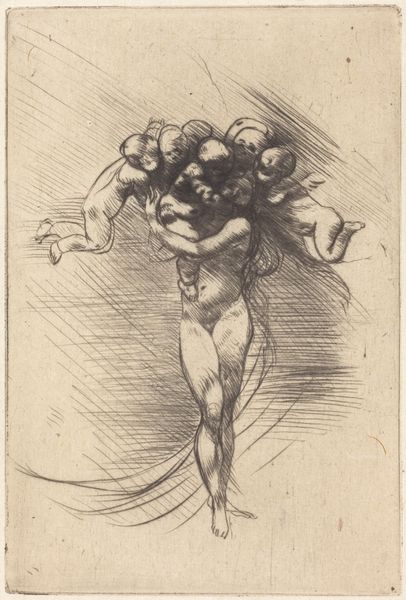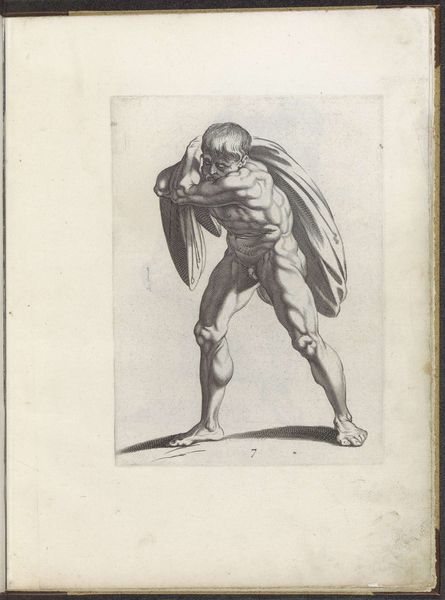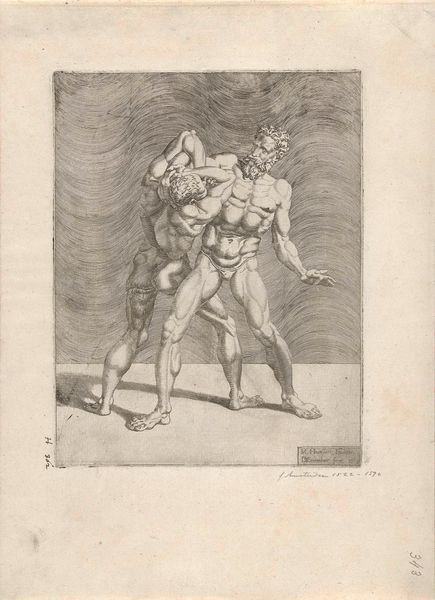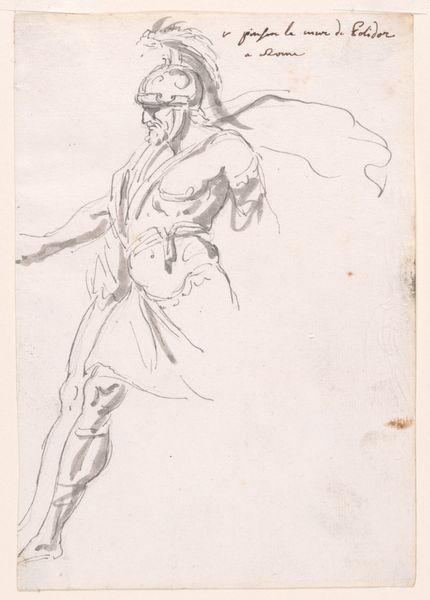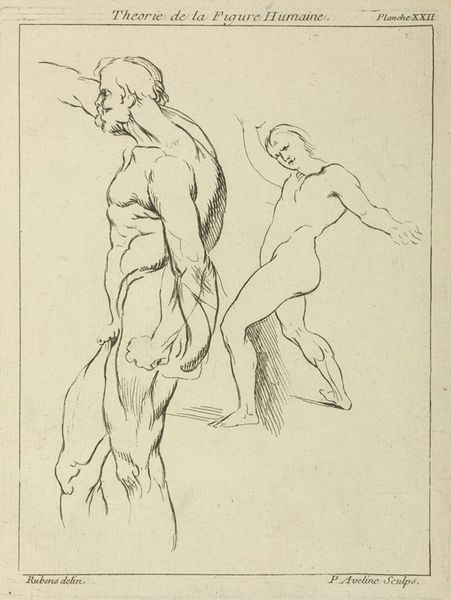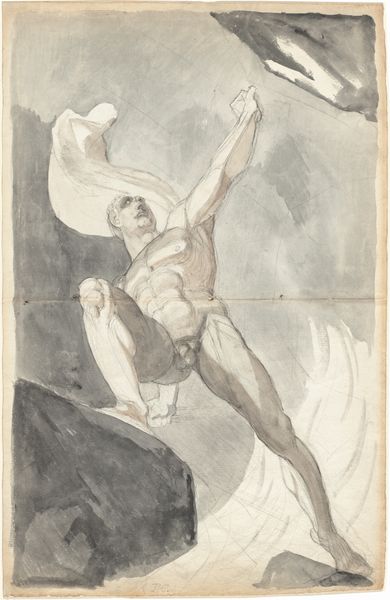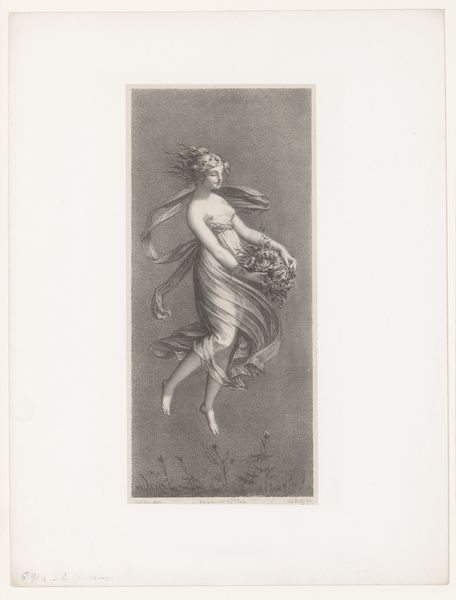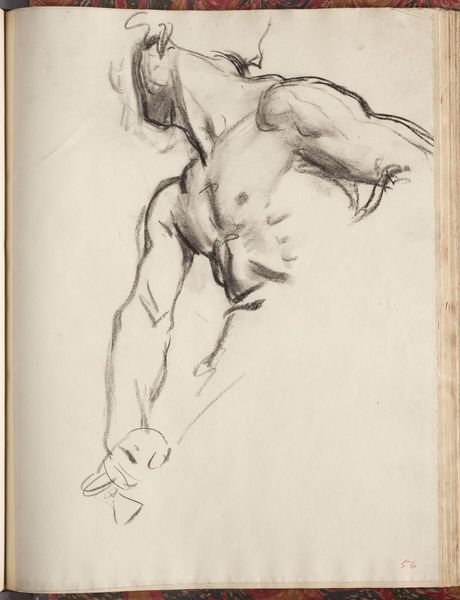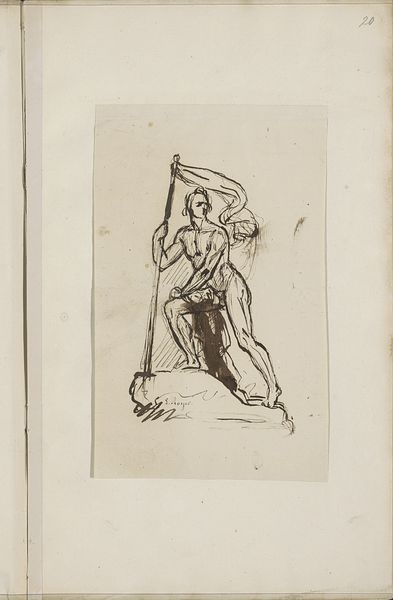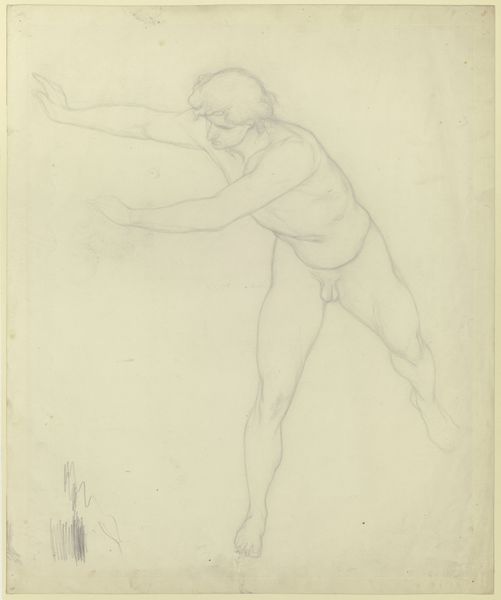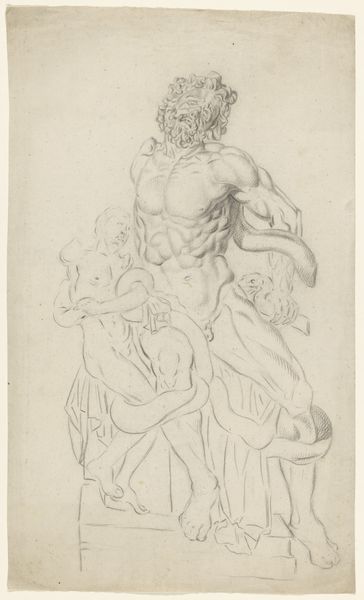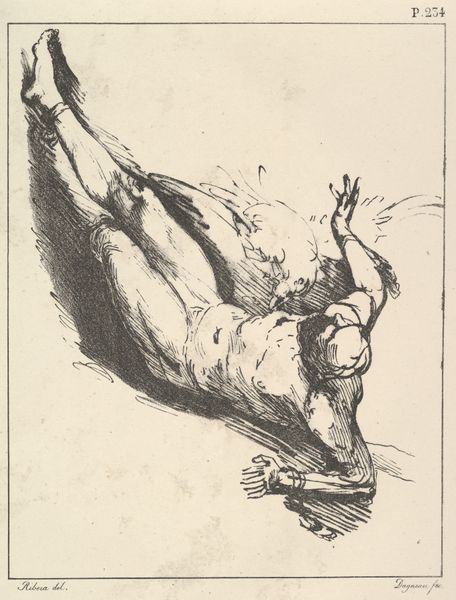
drawing, print, etching, intaglio
#
drawing
# print
#
etching
#
intaglio
#
figuration
#
cupid
#
symbolism
#
watercolour illustration
#
nude
Dimensions: sheet: 12 3/16 x 6 5/16 in. (31 x 16 cm) image: 5 13/16 x 3 15/16 in. (14.8 x 10 cm)
Copyright: Public Domain
Editor: Here we have Rodin’s "Spring," also known as "Le Printemps," a print made between 1882 and 1888. It's an etching, with the fluid lines giving it an ethereal feel. The central figure carrying cherubic babies creates this almost melancholic mood… What do you see in this piece? Curator: I see a profound exploration of cyclicality and renewal. The nude figure, laden with cupids, becomes an archetypal bearer of burgeoning life. Rodin uses the image of Spring to carry centuries of associated symbols of youth and rebirth, but does not present an ideal. It presents struggle. Editor: Struggle? I hadn’t considered that. Curator: Observe how the figure strains. Consider how the weight of new life – these playful cupids – impacts her balance. What cultural memories does that evoke for you? Do you perhaps recall similar iconography within Christian artworks, the burden of carrying human life? Editor: I see your point. It’s not simply joyous; it has a gravity to it, a burden, as you said. It makes you consider the future of those cupids as well. Curator: Exactly. And consider the medium – etching – with its fine lines, evokes fragility. It speaks to the fleeting nature of spring, of youth itself. It’s a reminder that even the most joyful times are interwoven with considerations for what’s to come. Editor: So, the visual weight plus the artistic execution, and combined with the artwork's symbolic associations give this etching more layers than I first assumed. Thanks for guiding me through a fresh perspective! Curator: The power of images rests in the memories and projections that viewers, such as yourself, bring. I am pleased to aid in its contemplation.
Comments
No comments
Be the first to comment and join the conversation on the ultimate creative platform.
